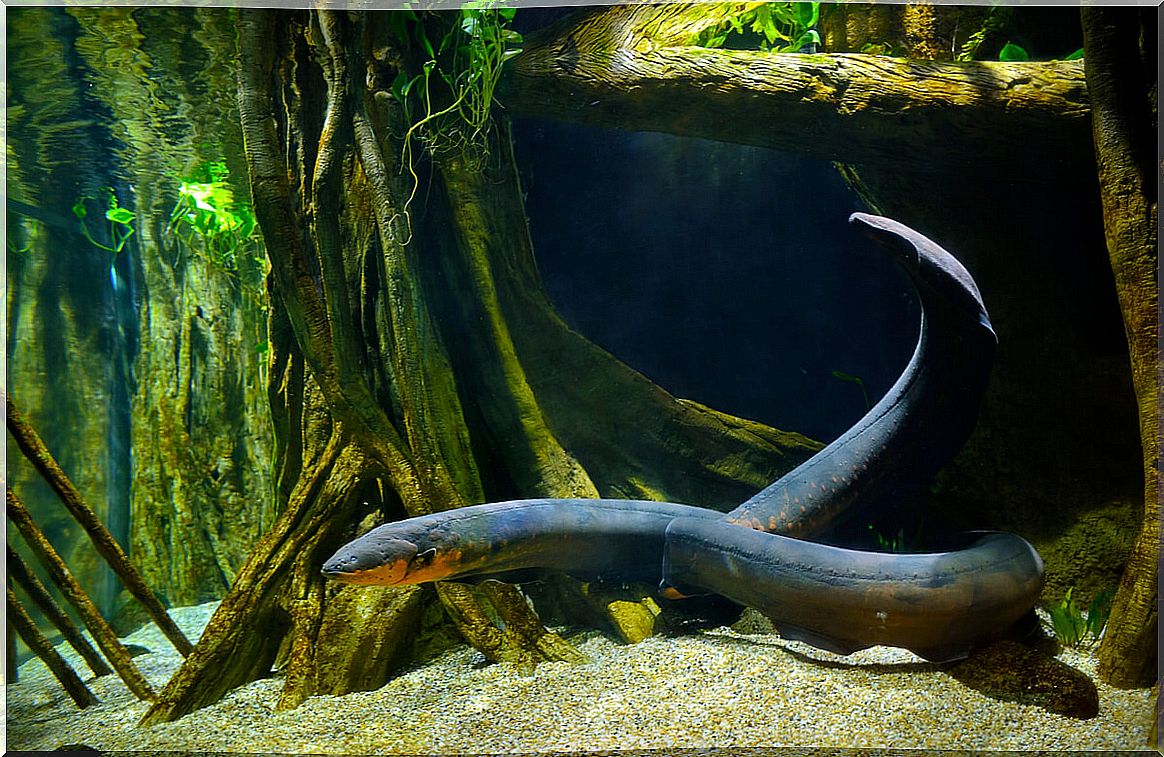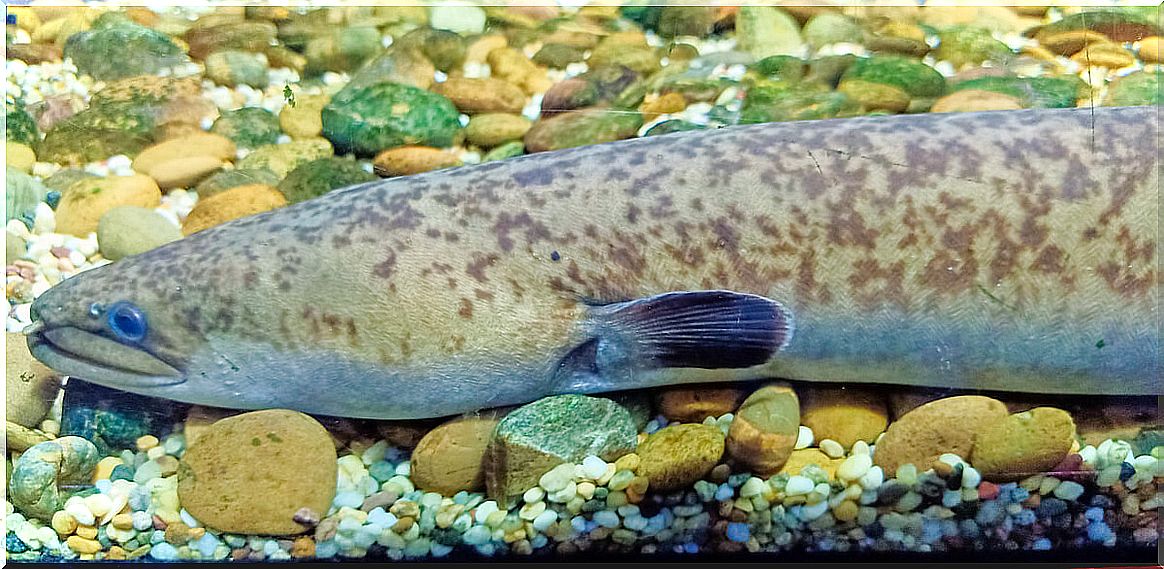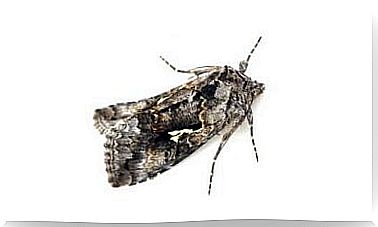The Gymnasts: Wonderful Beings Of The Amazon River

Gymnotes are bony river fish belonging to the order Gymnotiformes . Until 2019, a single species was known, the electric eel ( Electrophorus electricus ), belonging to the Gymnotidae family .
Despite the common name, this species is not a true eel ( Anguilliforme ), but a knife fish, more closely related to catfish or catfish.
Some unique fish
It should be noted that the eel’s name comes from its elongated body, which lacks a dorsal fin and pectoral fins. However, it has an extremely long anal fin that it uses to move.
The most fascinating trait of gymnotes is their ability to generate electric shocks. This ability has been known for centuries, even before electricity was discovered.
Such volleys can be large and are associated with your hunting, prey capture, and defense strategies. On the other hand, according to the opinion of experts, small electric shocks can be key in electrolocation and communication between subjects of the same species.
What do the gymnotes look like?
It is interesting to know that the gymnotes are not really eels, since they belong to the ostarioofisarios , although their appearance emulates that of the true eels. Thus, these fish have a long, snake-shaped body, without caudal, dorsal and pelvic fins.
On the other hand, they have an extremely elongated anal fin, which is used as a means of locomotion and allows them to swim backwards.
In addition, they have a skin without scales, thick and viscous that they use as a protective layer. Gymnotes vary from gray to brown / black in color, with a yellowish hue on the anterior ventral portion of the body. They may have whitish spots.
Also, its head has a slightly flattened cylindrical shape and a large mouth. In adult stage, they are large fish that can reach up to 2.5 meters and weigh 20 kilograms.

Gymnotes breathe through their mouths
Although gymnotes have gills, their function does not meet the oxygen demand of the fish. According to experts, these vestigial gills are used only to remove carbon dioxide and not for oxygen absorption. For this reason, these fish are mandatory air breathers.
In fact, almost 80% of their oxygen demand is obtained through their highly vascularized mouth. This adaptation allows them to use their mouths as a lung and forces them to surface quite often to breathe.
This characteristic allows gymnotes to survive comfortably in muddy water with very low dissolved oxygen concentration.
Habitat and geographic distribution
Gymnotes inhabit Venezuela, in the Orinoco, Río Negro and Cuyuní river basin. They are also present in the Amazon River and its tributaries and in the rivers that drain the Guiana Shield in Guyana, Suriname, French Guiana, and northern Brazil.
In general, they inhabit the muddy bottoms of rivers, streams, ponds and swamps, favoring deeply shaded areas.
These nocturnal species are among the main aquatic predators of the flooded whitewater forest, known as varzea.
The varzea forest is a forest ecosystem that occupies about 2% of the Amazon basin. They are the forests that grow in the floodplains rich in mineral sediments.
It should be noted that this ecosystem has a large number of typical and exclusive flora and fauna. The enormous amount of sediment makes the soils in these areas some of the most fertile in the Amazon.
At the time when they are flooded, fish use them both for feeding (becoming important dispersers of plant seeds) and for reproducing.
Three species of gymnotes are now known
Until 2019, a single species of gymnote ( Electrophorus electricus ) was believed to reign in the Amazon River basin. This species can generate strong electrical shocks (up to 650 Volts).
A new study reported the existence of two new species of electric eels. One of them, capable of delivering 860 volt electrical shocks, was identified as Electrophorus voltai .
Additionally, the third species was designated Eletrophorus varii, in honor of the late Smithsonian ichthyologist Richard Vari. In the aforementioned study, the authors determined that each species has a unique skull shape.
They also have defining characteristics in their pectoral fins and a distinctive arrangement of pores on the body. Furthermore, each species also has its own geographical distribution.
Thus, Electrophorus electricus lives in the highlands of the Guiana Shield, while Electrophorus voltai lives further south, in the Brazilian Shield. Finally, Electrophorus varii is found in the lowlands of the Amazon River.
Behavior
These fish are nocturnal, low-vision animals that live in murky, dark waters. For these reasons, they must rely on the electricity they generate to detect other fish.
Although gymnotes have the potential to be quite aggressive animals, they are not. In reality, they only use their strong shocks from electrical organs for predatory and defensive purposes.
On the other hand, weak electrical discharges use them for electrolocation. This is especially important due to poor eyesight.
The gymnotes are positively charged near the head, while the tail is negatively charged. It should be noted that the polarity of the fish itself helps create this electric field that dictates much of the animal’s behavior.
The use of bioelectricity in the gymnotes
It is important to note that gymnotes have three electrical organs: the main organ, the Hunter organ, and the Sach organ . All of them are made up of modified muscle cells:
- The main electrical organ is located on the dorsal side; It covers the middle part of the body from behind the head to the middle of the tail.
- Second, Hunter’s organ is parallel to the main organ but on the ventral side. These generate high-voltage pulses that stun prey and deter predators.
- The organ of Sach is located in the hind quarter of the electric eel. This organ produces lower voltage pulses that allow communication and navigation in murky waters.
Where does this bioelectricity come from?
In these fish, the discharges occur because their nervous system contains a series of electrogenic cells (that produce electricity). These specialized cells are shaped like a disc and are called electrocytes.
Each electrocyte carries a net negative electrical charge; inside the cells have a high concentration of positively charged potassium ions. For this reason, each disk has a potential difference of just under 100 millivolts.
At the time of hunting or defense, the neurotransmitter acetylcholine is released, which induces the discharge of these cells. The neurotransmitter develops a low electrical resistance pathway between one side of the cell and the interior.

Thus, by an active transport process, potassium ions from outside the cell rush into that side of the cell.
Then some of the potassium ions inside the cell come out on the other side of the cell to maintain balance. With this process, the cell releases about 50 millivolts of electricity.
It is important to note that the electrogenic cells are stacked. For this reason, the firing activity of one cell activates others around it, creating a cascade of current. It is the collective discharge of electricity from each cell that allows the gymnote to deliver up to 860 volts.









